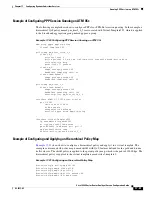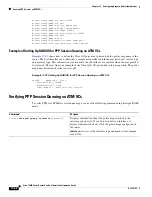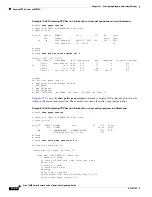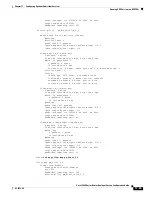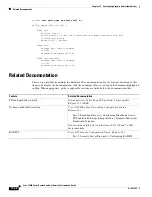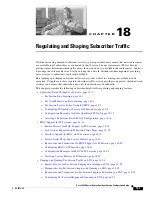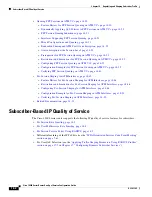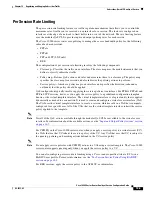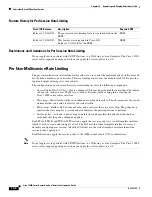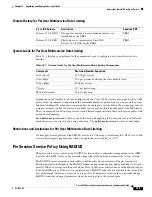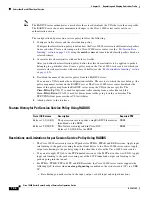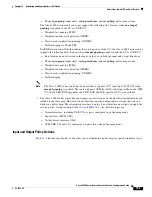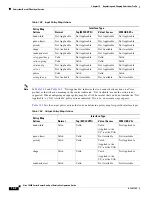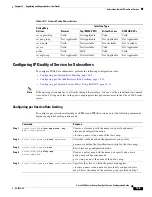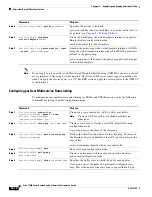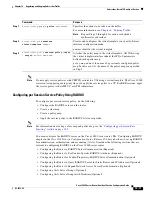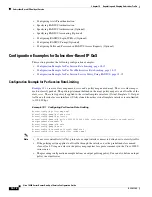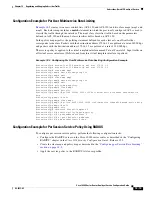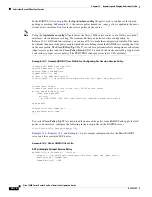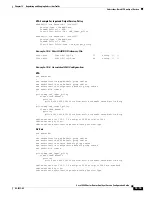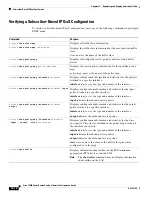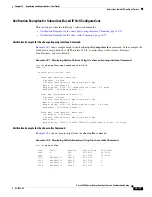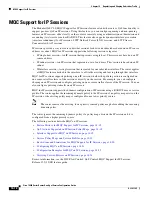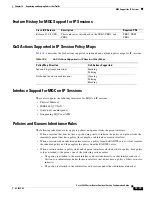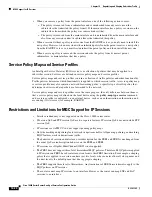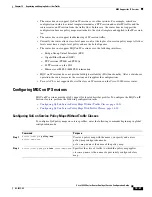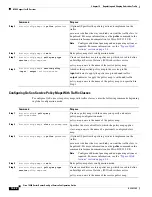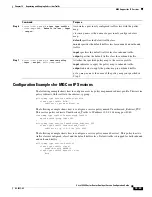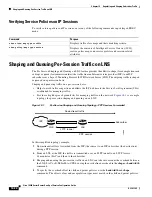
18-9
Cisco 10000 Series Router Quality of Service Configuration Guide
OL-7433-09
Chapter 18 Regulating and Shaping Subscriber Traffic
Subscriber-Based IP Quality of Service
Configuring IP Quality of Service for Subscribers
To configure IP QoS for subscribers, perform the following configuration tasks:
•
Configuring per Session Rate Limiting, page 18-9
•
Configuring per User Multiservice Rate Limiting, page 18-10
•
Configuring per Session Service Policy Using RADIUS, page 18-11
Note
If the policing action applies to all traffic through the interface, you can use the predefined class named
class-default
. Using one class in the policy map requires less process memory in the Cisco 10000 series
router.
Configuring per Session Rate Limiting
To configure per session rate limiting for PPPoA and PPPoE sessions, enter the following commands
beginning in global configuration mode:
set ip prec/dscp
Valid
Not Applicable
Valid
Valid
set qos-group
Not Applicable
Not Applicable
Not Applicable
Not Applicable
set atm-clp
Valid
Not Available
Not Available
Not Available
set cos
Valid
Not Available
Valid
Not Applicable
police
Valid
Valid
Valid
Valid
set mpls-exp
Not Applicable
Not Available
Not Applicable
Not Applicable
Table 18-3 Output Policy Map Actions
Policy Map
Actions
Interface Type
Normal
Tag (MPLS VPN)
Virtual Access
ATM UBR VCs
Command
Purpose
Step 1
Router(config)#
class-map match
[
any
|
all
]
class-map-name
Creates a class map with the name you specify and enters
class-map configuration mode.
class-map-name
is the name of the class map.
Step 2
Router(config-cmap)#
match
parameters
Classifies traffic based on the parameters you specify.
parameters
define the classification criteria for the class map.
Step 3
Router(config-cmap)#
exit
Exits class-map configuration mode.
Step 4
Router(config)#
policy-map
policy-map-name
Creates a policy map with the name you specify and enters
policy-map configuration mode.
policy-map-name
is the name of the policy map.
Step 5
Router(config-pmap)#
class
class-map-name
Specifies the class to which the policy map applies.
class-map-name
is the name of a previously configured class
map. This is the name of the class map you specified in Step 1.

